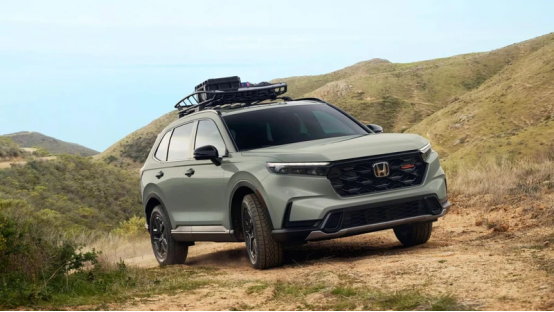The 2025 Honda CR-V continues to impress as a well-rounded compact SUV, combining practicality, comfort, and advanced features. Its lineup, including both gas and hybrid variants, caters to families, commuters, and a wide range of drivers seeking reliable performance and modern amenities.

Overview and Design
As part of the sixth-generation CR-V introduced in 2023, the 2025 model refines an already familiar design. While retaining its recognizable profile, subtle updates give it a more modern, confident look. A bold front grille, sculpted body lines, and sharp LED lighting define the exterior, reflecting Honda’s current design philosophy.
Inside, the cabin benefits from upgraded materials and an enhanced digital interface. Drivers enjoy the intuitive infotainment system and ergonomic layout, while passengers appreciate the spacious seating and comfortable ride. Early owner impressions highlight the CR-V’s strong reliability and ease of use, though some note that handling prioritizes comfort over sportiness.
Performance and Powertrain Options
For 2025, Honda offers two main powertrain options. The base 1.5-liter turbocharged four-cylinder engine delivers about 190 horsepower and 179 lb-ft of torque, paired with a responsive continuously variable transmission (CVT). The hybrid variant combines a 2.0-liter engine with dual electric motors, producing roughly 204 horsepower. Most trims are available with front-wheel or all-wheel drive.
On the road, the CR-V provides a composed and capable drive. While not aimed at sporty handling, it manages daily driving tasks with confidence. The hybrid earns praise for smooth power delivery, improved responsiveness, and better fuel efficiency. Honda’s suspension maintains a balance of comfort and stability, effectively absorbing road imperfections while keeping composure through curves. Towing capacity is moderate: about 1,500 pounds for standard models and 1,000 pounds for hybrids.
Interior, Space, and Comfort
The CR-V emphasizes practicality and passenger comfort. Rear seating offers around 39.3 inches of legroom, accommodating taller passengers comfortably. Cargo space measures approximately 39.3 cubic feet behind the rear seats and expands to roughly 76.5 cubic feet with seats folded.
The dashboard presents a clean horizontal layout, featuring a 7-inch digital display on base trims and a 9-inch screen on higher trims. Soft-touch materials and refined surfaces give the cabin a premium feel, especially on upper trims. Seats are supportive and versatile for long journeys, while enhanced insulation provides a quieter, more serene environment, particularly on highways.
Fuel Efficiency and Economy
Fuel economy is a notable strength. The standard turbo engine achieves roughly 28 mpg city, 34 mpg highway, and 30 mpg combined for front-wheel-drive models, with slightly lower figures for all-wheel drive.
Hybrid models are even more efficient, achieving about 43 mpg city, 36 mpg highway, and 40 mpg combined for front-wheel drive, and 40 mpg city, 34 mpg highway, and 37 mpg combined for all-wheel drive. Real-world driving often aligns closely with these estimates, especially in city conditions where the hybrid system optimizes electric assist. The hybrid can also operate in EV mode at low speeds, helping reduce fuel consumption and emissions in urban settings.
Market Position and Value Retention
| SUV Model | Starting MSRP (est.) | Key Strengths | Fuel Economy (combined) |
| 2025 Honda CR-V | $28,500 - $39,000 | Reliability, interior space, efficiency | 30–40 mpg |
| 2025 Toyota RAV4 | $28,000 - $42,000 | Powertrain variety, resale value | 30–41 mpg |
| 2025 Mazda CX-5 | $27,500 - $40,000 | Driving dynamics, upscale interior | 26–28 mpg |
| 2025 Hyundai Tucson | $27,000 - $38,500 | Warranty, tech features | 29–38 mpg |
| 2025 Ford Escape | $28,000 - $39,500 | Technology, engine variety | 28–37 mpg |
(Prices and specifications are estimates and may change; verification is recommended.)
Honda’s longstanding reputation for dependability continues to support strong resale values. The CR-V generally depreciates slower than many competitors, with residual values expected to exceed 60% after three years. For buyers seeking a compact SUV that balances versatility, comfort, and long-term value, the 2025 Honda CR-V remains a compelling choice in its segment.
